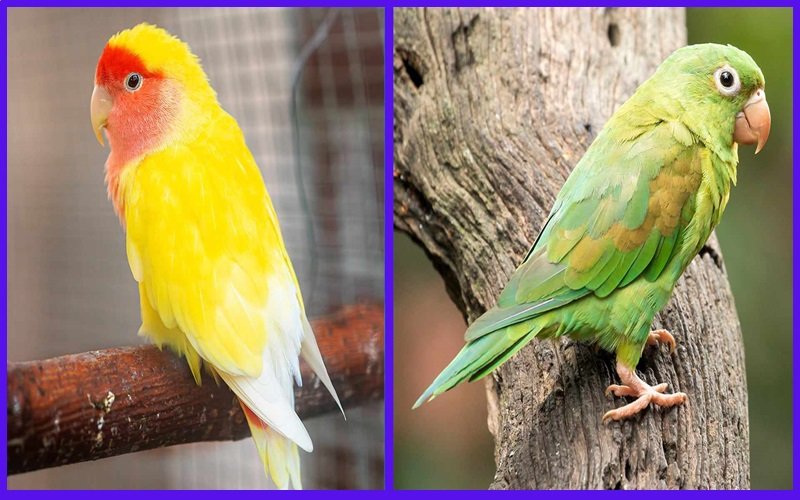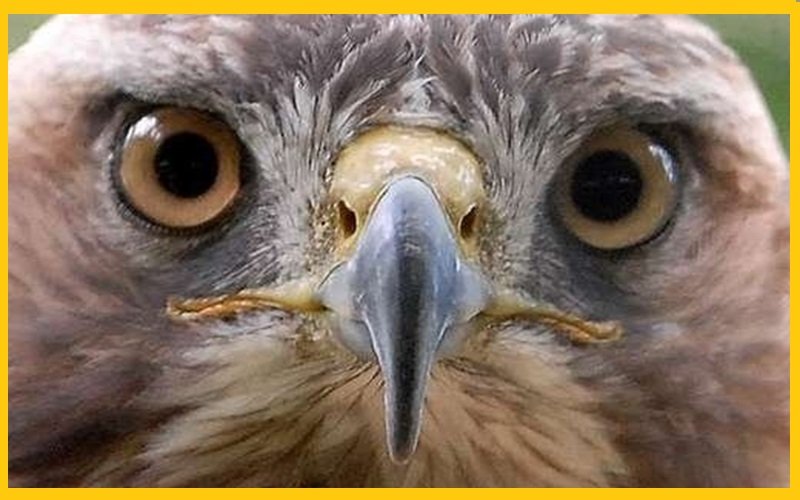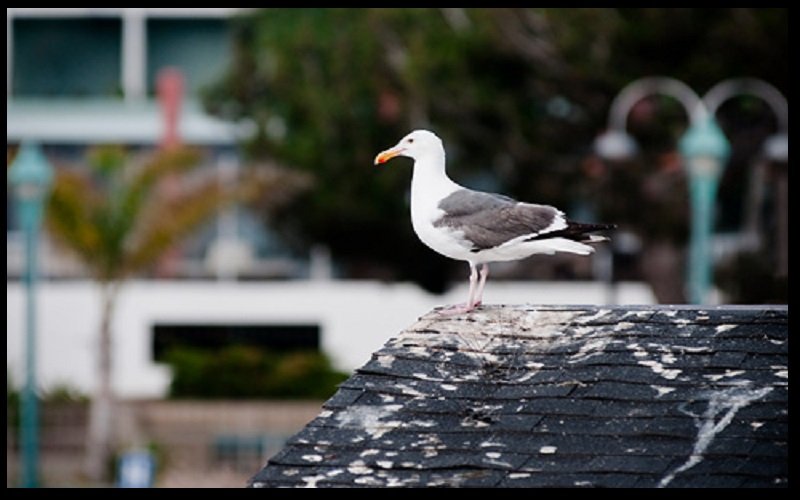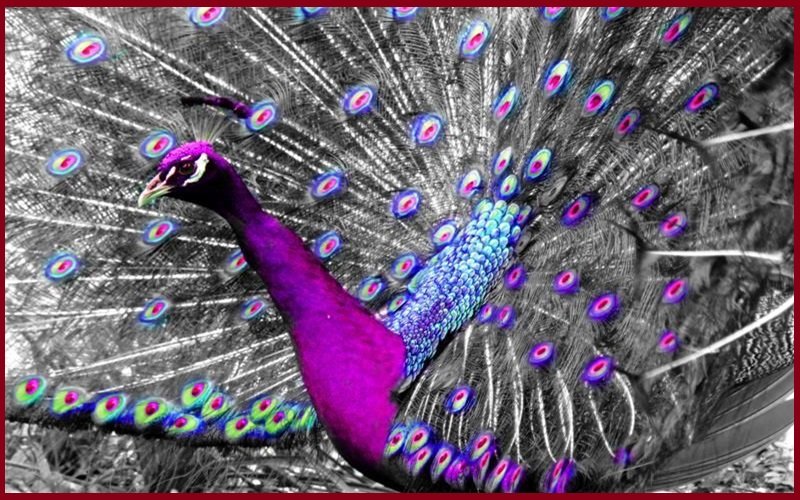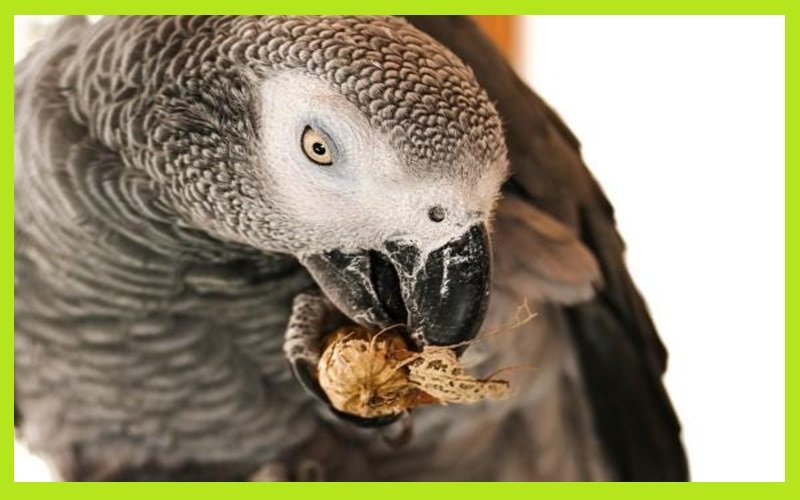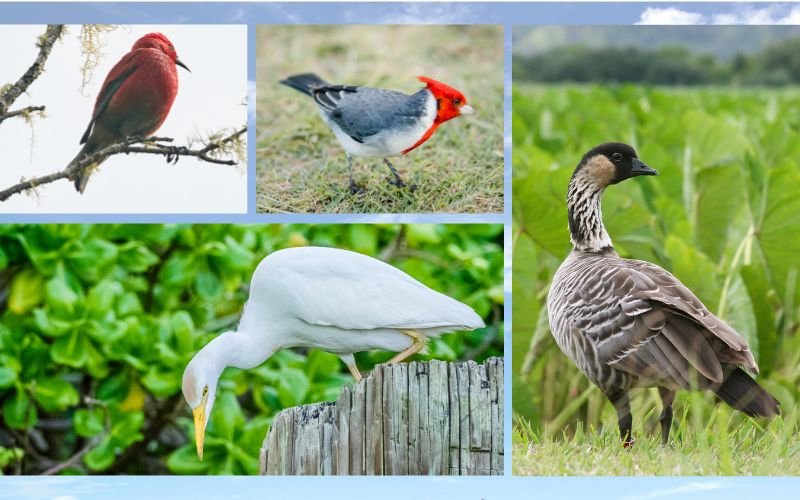If you are a new bird owner and want to have a pet bird but are confused about which pet you should buy, then this article is definitely for you.
The most popular two pet birds among humans are lovebirds and parakeets. Both have their own individualism as a species.
In this article, I will compare these two pet birds regarding their physical characteristics, habitat, behavioral differences, and care and maintenance for keeping them as pets.
Besides, I will provide some popular breeds and varieties of these two species types so you can decide which birds you want to keep as pets. So, let’s do a comparison analysis of both pet birds.
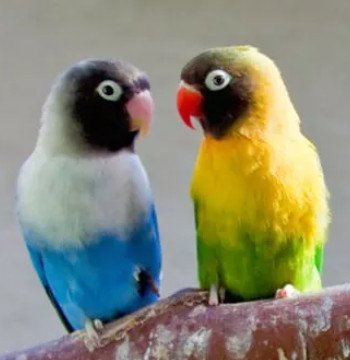
Physical Characteristics Differences
The most common differences between them are their physical differences. Although lovebirds and parakeets both have vibrant color plumage on their bodies, they still have different appearances that make them unique.
Lovebirds are a little smaller than parakeets and have rounded heads and beaks. Mostly, they have peach faces or masked faces.
On the other side, parakeets are comparatively larger and have more pointed beaks than lovebirds. Lovebirds are mostly 13 cm to 17 cm long, while their wingspan is about 9 cm.
Similarly, their weight is about 40 grams to 50 grams. Conversely, parakeets are about 18 cm long with 12 inches wingspans. Their weight is about 30 to 40 grams.
In the same way, lovebirds mostly contain green plumage with a different color variation on their body depending on different species.
Parakeets also have different color variations, such as green, yellow, and orange. Both genders have different identity verifications, so you can easily identify them by the color of their beaks.
Male parakeets have blue cereals on the tops of their nose or bills, whereas female parakeets have nude pinkish or brown cere on their beaks.
In contrast, lovebirds have short beaks but are not as curved as parakeets. Parakeets can generally survive up to 15 years, while lovebirds tend to live longer—up to 20 years or even more.
Habitat and Behavior Differences
Lovebirds and parakeets have their own regional distribution and natural habitats. And so, their natural habitat and behavioral traits make them slightly different from each other.
Natural Habitat
Although both live in the wild, their preferred habitats are quite different. Lovebirds are native to African continents, like the island of Madagascar.
Generally, their range covers southwest Africa, northeast Tanzania, Malawi, Ethiopia, etc. Lovebirds’ preferred habitats are woodlands, deserts, security forests, and savanna areas.
Parakeets, conversely, are mostly familiar with the Australian region, Pacific Islands, Southeast Asia, and tropical America. Their most preferred habitats are subtropical rainforests, coastal lands, wetlands, and forests.
Behavioral Differences
Both lovebirds and parakeets have different behaviors in different situations and circumstances, such as social behavior, mating behaviors, etc.
Both species are social birds and love to socialize with their environments. However, lovebirds are slightly more social in their environments than parakeets.
They tend to do more playful activities and be more affectionate with their owners, whereas parakeets may not be as affectionate.
They might not show too much cuddling behavior, like being in their own way or zone. So if you are thinking of getting a pet that cuddles more in nature and can show affection to its owners, you can buy lovebirds as pets.
If you want a low-maintenance bird who doesn’t need much attention or care and can be their own, then parakeets might be a better choice for you.
Different Vocalization
Another key difference between lovebirds and parakeets is their vocalization behavior or noise levels. Lovebirds are known to make more vocal sounds than parakeets.
They usually make high-pitched vocal sounds or chirp, which may sometimes annoy humans. However, lovebirds try to communicate or show affection to their companions or owners by using their pitched vocal sounds.
So, if you are comfortable and bearable with high-pitched sounds, you can have lovebirds as pets. On the other hand, parrots are generally not as vocal as lovebirds.
They mostly express themselves moderately through their vocals. They also produce vocal sounds like chirping and chattering, which are more soothing.
So, if you want less noisy birds, you can buy parakeets as pets because, compared to lovebirds, they are quiet and use a decent amount of vocals to communicate.
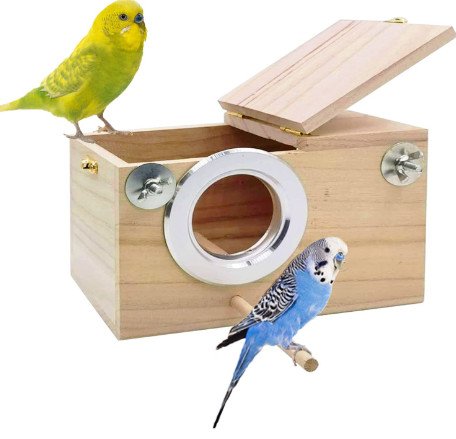
You can also read : 15 Types of Bird That Lays Blue Eggs
Care and Maintenance Difference
Now, let’s discuss the maintenance and care needed to keep both these species as pets. Being a bird owner means you have to keep many things in mind and be more cautious about your bird’s maintenance, like a guardian.
Grooming Differences
Both birds equally demand some level of maintenance and grooming sessions for each other to be healthy. You need to give them a daily bath with mild warm water.
You can also use different bathing bowls available in the market so that they can be more playful and perch on the edge of the bowl. You can also consult with a bird vet about cutting their nails and feathers.
It’s also important to maintain their feathers so they can fly effortlessly and without discomfort. You have provided toys and perching tools so they can play and be active throughout the day.
An empty cage could be dull and boring for them to live in. That is why we try to fill the cage with different colorful toys and equipment. It will give them a healthy environment and keep them jolly and playful.
Diet Differences
Similarly, both pets need different kinds of food in their diets. Although they are the same root species, their food is also similar.
Both birds are seed-eaters and require seeds, grains, fruits, fresh vegetables, and clean water. However, lovebirds could be more picky eaters than parakeets.
They might need a diet that varies; it will make them more curious about and excited about food. And so, love birds’ bodies need different types of nutrients and vitamins at different times.
That’s why you need to make changes according to their seasonal requirements. However, a balanced diet can give them healthy skin with pigmented feathers.
Hence, you need to differentiate their diet according to your pet species.
Cost Difference
Another difference might be the cost variation of both species. This cost variation might depend on factors like cage size, toys and accessories, food and medicines, etc.
Besides these, species variation is another factor differentiating the cost level. Lovebirds and their subspecies are usually more costly than parakeets.
They need more toys, accessories, and a larger cage to be more active and playful inside of it. Otherwise, they might become monotonous and depressed because of the dull environment.
Health Issues
Like all other pet birds, lovebirds and parakeets can suffer from several health issues, such as infection, digestion problems, loss of appetite, egg binding, respiratory, parasite, diarrhea, and feather-plucking diseases.
Both species can injure themselves while fighting with other birds or pets. Female pets mostly suffer from egg-binding problems and might be dead if the egg gets stuck inside their belly for too long.
Apart from these, some minor diseases like watery eyes, cold, runny nose, coughing or sneezing, fading color, etc. They will need proper vet care and medication to heal in those cases.
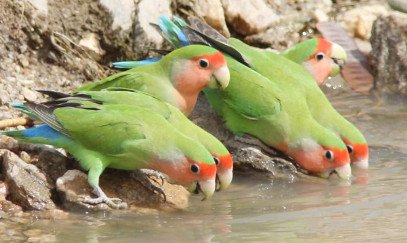
Popular Breeds and Varieties
Both lovebirds and parakeets have their individual subspecies or breeds. The most popular lovebird breeds are peach-faced or rosy-faced lovebirds, which are very common as pet birds.
Apart from these species, masked lovebirds, black-checked, black-winged, and red-headed lovebirds are also quite famous breeds. These birds show more affection to their owners and companions.
They mostly stay active by flying all around, climbing, perching, and grooming all day. On the other hand, parakeets’ most common breed is Budgies or budgerigar.
Cockatiels are another popular breed to keep as a pet. Their different color variations make them more attractive.
Similar to lovebirds, they are also talkative, playful, jolly species. However, they require less attention and care than lovebirds.
Final Thought
On a final note, lovebirds and parakeets have differences depending on physical appearances, behavioral traits, care, and maintenance.
However, lovebirds are quite noisy and need more attention and affection from their owners whereas parakeets need less attention and are less noisy than lovebirds.
Finally, you can decide whether you want lovebirds or parakeets as pets. Both are the most famous pet birds among bird enthusiasts and lovers.
By giving them proper maintenance and care, you can create a healthy, joyful, lively, and fun-loving environment for them to live in.

